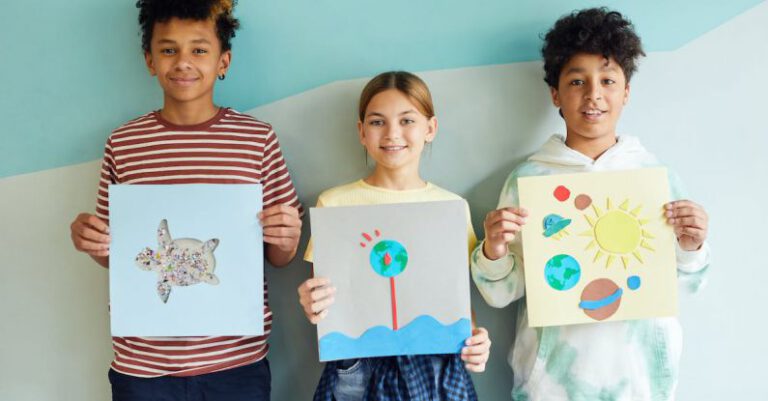Are There Techniques to Solve Problems Creatively?
In today’s fast-paced world, the ability to solve problems creatively has become a valuable skill. Whether it’s in the workplace, at school, or in our personal lives, being able to think outside the box and come up with innovative solutions can set us apart from the crowd. But is creativity something that can be learned and cultivated, or is it a talent that some are simply born with? Are there techniques that can help us develop our creative problem-solving skills? Let’s explore this fascinating topic and uncover strategies that can enhance our ability to solve problems in unique and imaginative ways.
Embracing a Growth Mindset
One of the fundamental principles of fostering creativity in problem-solving is to adopt a growth mindset. This mindset emphasizes the belief that intelligence and abilities can be developed through dedication and hard work. By viewing challenges as opportunities for growth rather than insurmountable obstacles, individuals can approach problems with a more open and flexible mindset. This shift in perspective can lead to increased creativity in problem-solving, as individuals are more willing to experiment, take risks, and explore unconventional solutions.
Divergent Thinking: Generating a Multitude of Ideas
Divergent thinking is a key component of creative problem-solving. This type of thinking involves generating a wide range of ideas, possibilities, and solutions without judgment or criticism. By allowing our minds to explore various avenues and consider unconventional approaches, we can uncover innovative solutions that may have been overlooked otherwise. Techniques such as brainstorming, mind mapping, and free association can help stimulate divergent thinking and encourage the generation of creative ideas.
Seeking Inspiration from Diverse Sources
Creativity thrives on inspiration, and one of the best ways to fuel our creative problem-solving abilities is to seek inspiration from diverse sources. Exposing ourselves to different perspectives, experiences, and ideas can broaden our thinking and spark new connections that lead to innovative solutions. Whether it’s through reading books, watching films, exploring nature, or engaging with people from different backgrounds, exposing ourselves to a variety of stimuli can ignite our creativity and help us approach problems from fresh angles.
Experimenting and Iterating
Creativity is a process of exploration and experimentation, and embracing a willingness to try new things and learn from failure is essential for creative problem-solving. By testing out different approaches, refining ideas, and iterating on solutions, we can uncover unexpected insights and breakthroughs that lead to innovative problem-solving strategies. Embracing a mindset of continuous improvement and being open to feedback can help us refine our ideas and approaches, ultimately leading to more creative and effective solutions.
Collaboration and Collective Creativity
Collaboration can be a powerful catalyst for creative problem-solving. By working with others who bring diverse perspectives, skills, and experiences to the table, we can leverage the collective creativity of a group to generate innovative solutions to complex problems. Collaborative techniques such as group brainstorming, design thinking workshops, and cross-functional teams can help facilitate the exchange of ideas, foster creativity, and encourage the synthesis of diverse perspectives into cohesive solutions. By harnessing the power of collaboration, we can tap into the collective intelligence of a group and unlock new possibilities for creative problem-solving.
Embracing Constraints and Limitations
While creativity is often associated with boundless freedom, embracing constraints and limitations can actually enhance our creative problem-solving abilities. Constraints can serve as creative catalysts, forcing us to think more critically, prioritize effectively, and innovate within specific parameters. By reframing constraints as creative challenges rather than obstacles, we can leverage limitations to inspire new ideas, spark creativity, and drive innovative problem-solving approaches. Embracing constraints can lead to more focused, efficient, and effective solutions that address the core issues at hand while encouraging creativity and ingenuity.
Developing a Creative Problem-Solving Toolkit
As we navigate the complexities of modern life, developing a toolkit of creative problem-solving techniques can empower us to approach challenges with confidence, curiosity, and creativity. By embracing a growth mindset, fostering divergent thinking, seeking inspiration from diverse sources, experimenting and iterating, collaborating with others, and embracing constraints, we can cultivate our creative problem-solving skills and unleash our potential for innovation and ingenuity. By incorporating these techniques into our problem-solving repertoire, we can tackle challenges with creativity, resilience, and resourcefulness, ultimately leading to more effective and impactful solutions that make a difference in our lives and the world around us.
In conclusion, creativity is not a fixed trait but a skill that can be developed and honed through practice, persistence, and a willingness to explore new possibilities. By embracing techniques that foster creativity in problem-solving, we can unlock our potential for innovation, ingenuity, and insight, enabling us to tackle challenges with fresh perspectives and imaginative solutions. By cultivating our creative problem-solving abilities, we can navigate the complexities of the modern world with confidence, adaptability, and resilience, ultimately leading to more effective and impactful outcomes in both our personal and professional lives.






